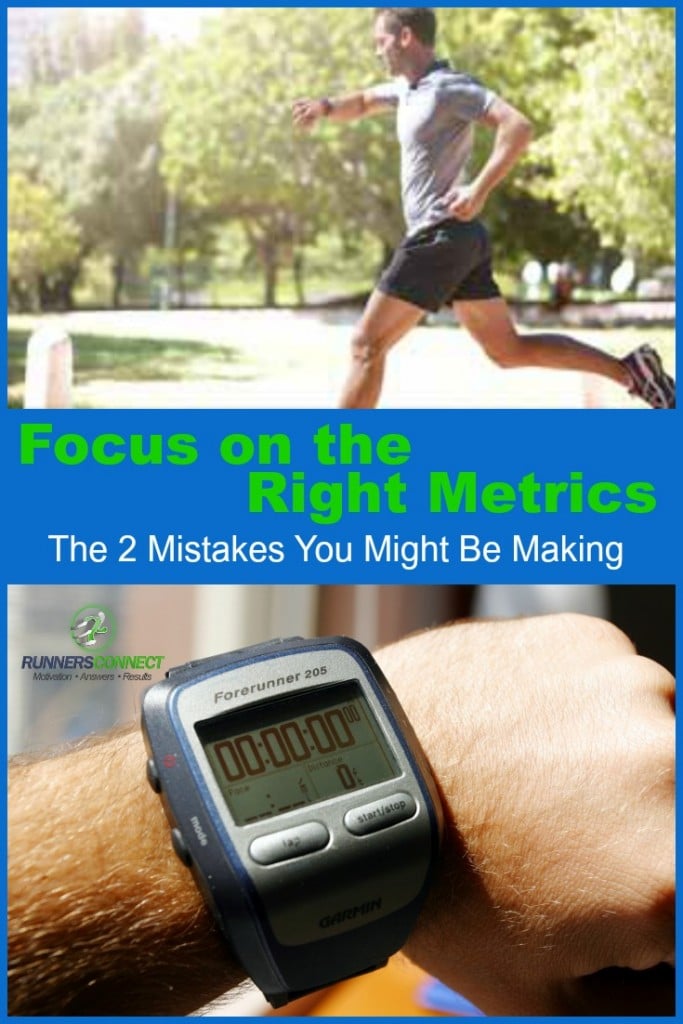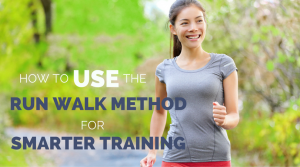 Analyzing metrics in the workplace is a familiar concept. Whether it be counting the visitors to a website, calculating the number of widgets sold, or measuring levels of employee satisfaction, we all have metrics in our daily lives that help us prioritize and assess the progress of our work.
Analyzing metrics in the workplace is a familiar concept. Whether it be counting the visitors to a website, calculating the number of widgets sold, or measuring levels of employee satisfaction, we all have metrics in our daily lives that help us prioritize and assess the progress of our work.
Running is no different.
Runners implement metrics such as the speed of their tempo runs, the length of our their long runs, and a variety of other quantitative measurements to help them evaluate their development and ensure that they are on target to reach their goals.
However, as many business analysts will tell you, it’s far too easy to get caught up focusing on the wrong metrics. If you sell purple widgets, having 1 million visitors to your website is a huge accomplishment. But, if none of those visitors buy your purple widget, it’s a useless number.
In the working world, we’re well educated and often quite aware of the temptation and potential pitfalls of concentrating on the wrong metrics. Businesses fail and people lose their jobs when you focus on the wrong business metrics.
Unfortunately, many runners are not aware that they are often too concerned with the wrong metrics in their training. The result is often frustration, stagnant race results, and injuries.
Here are a couple of common metrics many runners put too much focus on and how you can shift your mindset should you fall victim to these familiar pitfalls.
Focusing on the pace of your easy runs
Want to know the most common question I receive from RunnersConnect members, both veteran and beginner? “If I feel good, can I start running my easy runs faster?” Before writing this article, I decided to count how many times I received this question in one week. I counted 8 times. If you emailed me this week, sorry 🙂
The problem isn’t 8 people asking the same question. The issue is that these runners are unnecessarily focused on the speed of their easy runs and think that by running faster on their easy days they will improve more rapidly.
Unfortunately, focusing on improving the pace or your easy runs is a vanity metric that does not correlate with your progress and contributes little to your fitness.
Aerobic development is roughly the same whether you’re running at 30 seconds or 2 minutes slower than marathon pace. For a 3:30 marathoner, this means that 8:30 pace provides basically the same aerobic benefits as miles at 9:30 or 10:00 pace.
However, running faster than 8:30 pace only increases the time it takes for you to recover while providing little additional benefit aerobically. So, running faster is actually detrimental.
Probably the best example of how little your easy run pace matters is the training of Kenyan runners. Catherine Ndereba, who has a 2:18:47 marathon PR, often runs her easy run days at 7:00 – 7:30 pace, which is about 2 minutes slower than her marathon pace.
By keeping the easy days slow, Kenyan runners like Ndereba are able to perform notoriously difficult workouts and take their performances to another level on race day. The Kenyans understand that increasing the pace on their easy days is not the most beneficial way to improve.
Your takeaway – Running faster on your easy days is not important and it is not necessarily a sign of increasing fitness. Focus instead on the purpose of easy runs – recovering from hard workouts and preparing the body for upcoming sessions.
When you stop thinking about pace and start concentrating on recovering, you’ll be able to relax more and enjoy your easy runs for what they are – recovery.
Workouts are not designed to be a measurement of fitness
It’s easy to get frustrated and feel like you’re going backwards after a tough workout. I’ve had more than a few training sessions in my career that lead me to wonder if I had somehow completely lost it.
After one rough workout three weeks before an important 10k, my coach said something to me that I’ll never forget: “Workouts are for improving specific physiological systems, not for proving how fit you are. You prove your fitness on race day.” For some reason, that statement hit home and it’s something I’ve never forgotten.
When analyzing workouts it’s tempting to compare splits and workout times to potential race performances. However, the two rarely correlate.
Perhaps you’re working on speed, which is a weaknesses for your predominantly slow twitch muscles, or you’re heading into the workout with tired legs to help simulate marathon fatigue. Regardless, you may find yourself running slower than expected or struggling to maintain race pace. This can be frustrating and demoralizing if you’re always looking to measure your workout performance with race potential.
However, if you focus instead on executing the purpose of the workout and completing it to the best of your ability, you’re making progress physiologically, which will ultimately lead to a personal best on race day.
You’re takeaway – You should only use your workouts to measure progress when compared to similar workouts under similar conditions, not as a measurement of race times or potential. Remember, workouts are for improving specific physiological systems, not for proving how fit you are. You prove your fitness on race day.
The next time you’re analyzing your training or looking for areas to improve, make sure you’re evaluating the right metrics or you could find yourself working hard with nothing to show for it.
Have questions or have other example of vanity running metrics? Let us know in the comments section, we would love to hear them.
A version of this post originally appeared at competitor.com





5 Responses
OMG – How did I ever miss this blog. So awesome and helpful!
How does a runner maintain proper form, cadence, and a slow, easy pace? I don’t have any trouble with interval pacing or tempo pacing, just with easy (slow) pacing.
My easy pace training runs are supposed to be ~11:10-11:20/mile. I honestly have trouble running that slowly (unless I’m totally fatigued) and, concurrently, maintaining good form and cadence. [I’ve noticed that, when my cadence drops, my form has, usually, reverted back to overstriding/heel-striking. The result of that is injury; e.g., calf muscles’ strains, achilles’ strains, plantar fascia strains, or worse.]
Hi Raymond, a few articles for you to read, hopefully they help! This will give you some tips https://runnersconnect.net/running-training-articles/heelstriking-running-cadence/ and this is a good one for reassuring you that you are doing the right thing 🙂 https://runnersconnect.net/running-interviews/why-running-slower-on-your-easy-days-helps-you-run-faster-and-keeps-you-injury-free/ You should also check out our recent podcast with Matt Phillips https://runnersconnect.net/rc43 Hope this helps! Good luck!
“Vanity running metrics”. Lol, I like it!
Glad you enjoyed Andrew, do you agree?